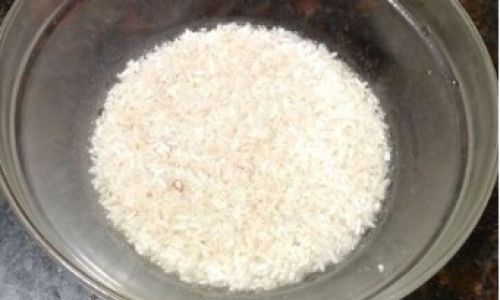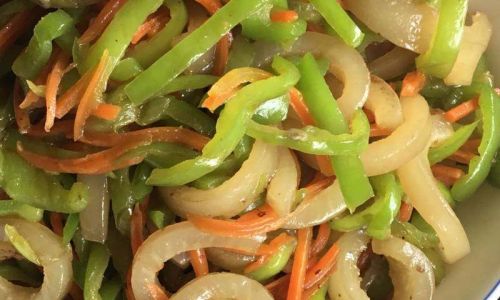Introduction
Rice, a staple food for nearly half of the world’s population, has been cultivated for thousands of years. Its versatility, affordability, and long shelf life make it a kitchen essential. However, the question of how to store rice optimally—particularly whether refrigeration enhances or diminishes its quality—remains a topic of debate. While some households swear by refrigerating rice to extend its freshness, others argue that traditional pantry storage suffices. This article delves into the science, myths, and practicalities of refrigerating rice, exploring its impact on shelf life, nutritional value, texture, and safety. By examining expert opinions, cultural practices, and experimental data, we aim to provide a comprehensive guide to this everyday dilemma.
The Science of Rice Spoilage
Rice, like all grains, is susceptible to degradation caused by biological, chemical, and environmental factors. The primary culprits behind spoilage include moisture, oxygen, enzymes, microorganisms, and pests.

- Moisture and Microbial Growth: Rice contains 10-15% moisture in its raw form. Exposure to humid environments accelerates microbial activity, leading to mold, yeast, or bacterial growth. These microorganisms produce toxins, such as aflatoxins, which pose health risks.
- Enzymatic Activity: Rice kernels house enzymes that, when activated by warmth or moisture, break down starches and proteins, causing rancidity and off-flavors.
- Oxidation: Exposure to oxygen triggers lipid oxidation, particularly in brown rice, which retains its germ and bran layers. This process generates free radicals, leading to bitterness and nutritional loss.
- Pests: Insects like weevils and moths lay eggs in rice, hatching into larvae that consume the grains. Warm temperatures expedite infestation.
Refrigeration addresses these issues by slowing enzymatic reactions, inhibiting microbial proliferation, and reducing pest activity. However, the method’s effectiveness depends on rice type, packaging, and storage duration.
Traditional Storage Methods vs. Refrigeration
For centuries, cultures have relied on airtight containers, cool pantries, and natural repellents like neem leaves or bay leaves to preserve rice. These methods are effective for short-term storage (6–12 months) but falter in humid or pest-prone regions.
Refrigeration offers distinct advantages:
- Temperature Control: Fridges maintain temperatures below 40°F (4°C), stifling bacterial growth and enzyme activity.
- Pest Prevention: Cold environments deter insect reproduction, reducing infestation risks.
- Extended Shelf Life: Studies suggest refrigerated white rice can last 2–3 years without significant quality loss, compared to 6–12 months at room temperature.
However, refrigeration is not without drawbacks. Condensation inside containers may introduce moisture, promoting mold if not sealed properly. Additionally, refrigerator odors can permeate rice if stored uncovered.
Types of Rice and Their Storage Needs
Not all rice varieties respond equally to refrigeration:

- White Rice: Milled to remove bran and germ, white rice has a low fat content (0.5–1%) and minimal enzymatic activity. It stores well in fridges for 2–3 years when airtight.
- Brown Rice: Retains bran layers rich in oils (2–3%), making it prone to rancidity. Refrigeration extends its shelf life to 6–12 months, versus 3–6 months at room temperature.
- Wild Rice: A aquatic grass seed, wild rice has a tough hull and low moisture content. It benefits minimally from refrigeration but should be stored similarly to brown rice.
- Parboiled Rice: Pre-steamed during processing, this variety resists spoilage better than white rice. Refrigeration is optional unless in humid climates.
Nutritional Considerations
Refrigeration’s impact on rice nutrition is nuanced:
- Vitamins and Minerals: White rice loses minimal nutrients during storage, as vitamins like thiamine are added post-milling. Brown rice, however, retains more B vitamins and antioxidants, which degrade slower in cold environments.
- Phytic Acid: A compound inhibiting mineral absorption, phytic acid breaks down slower in refrigerated rice, potentially affecting bioavailability.
- Starch Structure: Cold temperatures may alter starch retrogradation, slightly reducing digestibility. However, cooking typically reverses this effect.
Practical Tips for Refrigerating Rice
To maximize benefits and avoid pitfalls:
- Use Airtight Containers: Glass jars or vacuum-sealed bags prevent moisture and odor absorption.
- Freeze for Long-Term Storage: For durations exceeding 2 years, freezing rice at 0°F (-18°C) halts spoilage entirely. Thaw in the fridge before use.
- Label and Date: Track storage duration to prevent consumption beyond safe limits.
- Avoid Condensation: Cool cooked rice to room temperature before refrigerating to prevent excess moisture.
Common Myths Debunked
- “Refrigeration Makes Rice Hard”: Properly sealed rice remains pliable. Hardening occurs due to improper sealing, not temperature.
- “All Rice Types Benefit Equally”: As discussed, brown and wild rice gain more from refrigeration than white rice.
- “Refrigeration Kills Pests”: Cold temperatures only slow pest activity; freezing is required to eliminate larvae.
Expert Opinions and Studies
Food scientists emphasize that refrigeration is most beneficial in high-humidity areas or for organic rice lacking preservatives. A 2021 study in the Journal of Food Science found that refrigerated brown rice retained 90% of its gamma-oryzanol antioxidants after 12 months, compared to 65% in pantry-stored samples. Conversely, the USDA notes that white rice’s indefinite shelf life under dry conditions makes refrigeration optional but not harmful.
Environmental and Economic Factors
Refrigeration consumes energy, raising environmental concerns. A 2020 analysis estimated that storing 10 pounds of rice annually in a fridge emits 15 kg of CO2, equivalent to driving 35 miles. However, this pales compared to food waste: discarded spoiled rice contributes 6% of global agricultural emissions. Thus, refrigeration’s benefits may outweigh costs in regions with high spoilage rates.

Conclusion
The decision to refrigerate rice hinges on climate, rice type, and usage patterns. For those in humid areas, storing brown or organic rice in the fridge offers measurable advantages in safety and nutrition. White rice, with its inherent stability, requires refrigeration only if stored beyond a year. Regardless of method, airtight packaging and temperature control remain paramount. As global food systems grapple with sustainability, balancing preservation techniques with resource use will define future practices. Until then, the refrigerator stands as a reliable ally in the quest to keep this ancient grain fresh, safe, and delicious.
Final Thoughts
While refrigeration is not a one-size-fits-all solution, its role in modern rice storage cannot be dismissed. By understanding the interplay of science, culture, and practicality, consumers can make informed choices that honor tradition while embracing innovation. After all, the humble rice grain deserves nothing less than optimal care—whether nestled in a pantry or chilling in a fridge.




0 comments